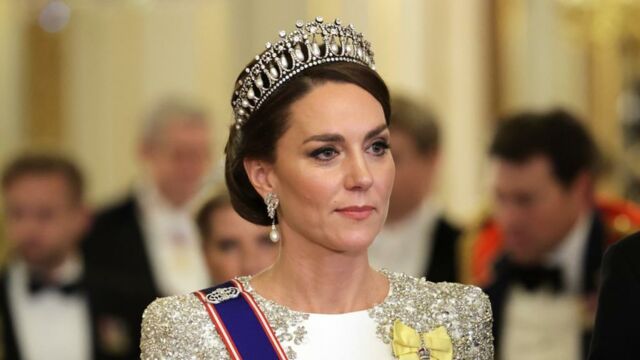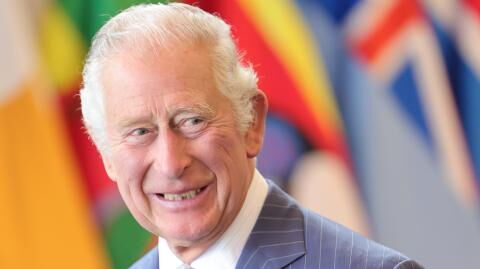Royal portraits are almost mandatory for members of the Royal Family. Though photography is now the main form of art through which the image of royals is broadcasted, paintings are still in use and usually mark big occasions.
Discover our latest podcast
Quite recently, the first ever official portrait of King Charles III since his coronation was revealed to the public. The painting by Jonathan Yeo was welcomed by mixed reactions. Some loved it, of course, but it seemed like the consensus leaned towards negativity.
Only a week after Yeo’s piece was unveiled, Tatler came out with their own commissioned portrait. This time, the subject is the Princess of Wales.
New portrait of the Princess of Wales for Tatler
On 22 May 2024, Tatler revealed the cover of their July issue — though it will be available in May — and it is a continuation of their series of royal portraits. The first was of Queen Elizabeth II in July 2022, the second of King Charles III in July 2023 and now, the third of the Princess of Wales.
In an interview with the Tatler, Hanna Uzor revealed she was only given three weeks to complete the painting but she also takes the time to address her intentions. Talking about the colour choice for the background, she said:
A green-blue, which I chose based on her eye colour and also trying to get elements of being in a garden and on water – rowing being one of her [favourite] sports and in some pictures.
In the interview, the artist also talked about her approach to portraits, a genre she is most familiar with.
All my portraits are made up of layers of a personality, constructed from everything I can find about them.
Helen Rosslyn who spoke to Uzor about the commission adds that the artist pays incredible attention to details and aims to emphasise ‘the visible and invisible parts’, thinking about how they can transpire in a painting. For the Princess of Wales, another layer was added and Uzor had to focus on ‘the dichotomy between the public persona and the private’ that surround her.
Not the first time Hannah Uzor works this way
It is important to note that the Princess of Wales did not sit for Uzor, forcing the artist to base her work on the ‘more than 189,000 pictures’ accessible on Getty Images. However, the painter explains this wasn’t a problem for her.
When you can’t meet the sitter in person, you have to look at everything you can find and piece together the subtle human moments revealed in different photographs: do they have a particular way of standing or holding their head or hands? Do they have a recurrent gesture?
Furthermore, Uzor is known for her 2020 painting of Sara Forbes Bonetta, an African goddaughter of Queen Victoria. This project required her to base her work on pictures and other representations of the woman.
As a creative, Hannah Uzor has a keen interest in history and what she explains as ‘evoking memory’ which she considers as her work’s mission.
Reactions to Hannah Uzor’s portrait of Kate Middleton
As with any royal portrait, Uzor’s work was bound to be commented on. In this case, people are quite confused about how the artist chose to paint the Princess’ face. Indeed, it is fair to say that it is not the most realistic representation.
On X, users have not hesitated to express their discontent. One user wrote:
If you thought King Charles's portrait was bad, feast your eyes on this abomination of Kate Middleton... it's actually almost impossibly terrible.
Another user said:
Is this primary school painting competition?
Other people on X have used the words ‘quirky’, ‘insulting’ and ‘horrid’ to describe the painting. One user also said that Uzor ended up painting Queen Mary of Denmark instead of Kate Middleton.
Royal commentator reacts
On TikTok, royal commentator and art historian @matta_of_fact reacted to the painting and offered an interesting perspective. According to her, there is a reason behind the vagueness and unrealistic nature of the painting.
The expert links it back to the fact that the painting is layering what the Princess looks like with her personality and character. For instance, it is true that the artist mentioned that Kate's video about her cancer diagnosis was one of her inspirations behind the portrait. For her it showed the Princess' 'courage' as well as her ability to '[deal] with something difficult [and] tackle it head-on'.
In her video, @matta_of_fact expanded:
Tatler called this picture a ‘portrait of strength and dignity’ which I think is the reason it looks nothing like her.
Here, don’t get the expert wrong — at no point in this video or others we’ve watched does she imply that the Princess of Wales isn’t strong and dignified. But, she does highlight that those two adjectives are ‘vague attributes’.
Continuing her argument, the expert talks about how Kate Middleton’s character and personality are kept secret. For her this is ‘by design’. She explains that ‘British subjects are supposed to look at Kate and be able to project’ on her. She goes on and says that in the painting, the only way we know this is Kate, is because she is wearing very distinctive and memorable items. She furthers:
Just like you think you know the real Kate is because of the symbols from the monarchy she is able to drape herself in.
Finally, the royal commentator places the portrait in a very clear context: it was commissioned by Tatler which is a publication that openly supports the monarchy and therefore will promote the ideas the Firm chooses. Here, this can be seen through the choice of a painting that shows the Princess of Wales as ‘neutral and vague’.
What did you think of the painting?
Read more:
⋙ Prince William and Harry: The truth behind infamous portrait being removed
⋙ Princess Diana: A look into the past tells us what the royal predicted for the reign of King Charles
Sources:
Tatler: Royal dignity on canvas: a history of the Princess of Wales in portraiture
Tatler: A picture of strength, dignity and courage: Tatler commissions British-Zambian artist Hannah Uzor to honour the Princess of Wales for its third annual cover portrait
The Telegraph: Princess of Wales portrait unveiled in Tatler depicts her ‘courage and dignity’, artist claims















